Note: This is part 2 of the discussion of the world’s most famous carbon dioxide absorber. If you have not read part 1, please click here to go to part 1.
Soon, however, there was another problem needing an urgent solution. As all anaesthetists will know, humans put out carbon dioxide in their breath. If this is not removed, the person could die of high carbon dioxide levels. On Earth, where there is plenty of room for gases to spread, high carbon dioxide is not an issue. However, in a confined area such as that found in the lunar module, the carbon dioxide, if not removed promptly, could quickly rise to lethal levels.
Both the lunar module and the command module had “carbon dioxide absorbers” to absorb the carbon dioxide produced by the astronauts. These are shown in pink below.

These absorbers had special chemicals to combine with carbon dioxide, thereby removing it from the air in the spacecraft. In the Apollo spacecraft, these absorbers had the chemical Lithium Hydroxide to absorb the carbon dioxide.

This is somewhat similar to the chemical reactions that happen in carbon dioxide absorbers used in anaesthesia. However, in anaesthesia, the main ingredient used is usually Calcium Hydroxide (soda lime) or Barium Hydroxide, rather than the Lithium Hydroxide used in spacecraft.
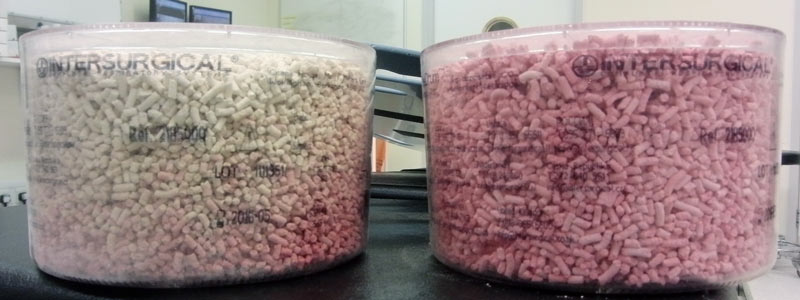
The Lithium Hydroxide chemicals used in the spacecraft to absorb the carbon dioxide were kept in special sealed “containers”. In the lunar module, the containers were “circular shaped” whereas in the service module, the containers were “square shaped”. This difference in shape would become a huge problem in our story.

Let us first see the Lithium Hydroxide absorber containers found in the command module.
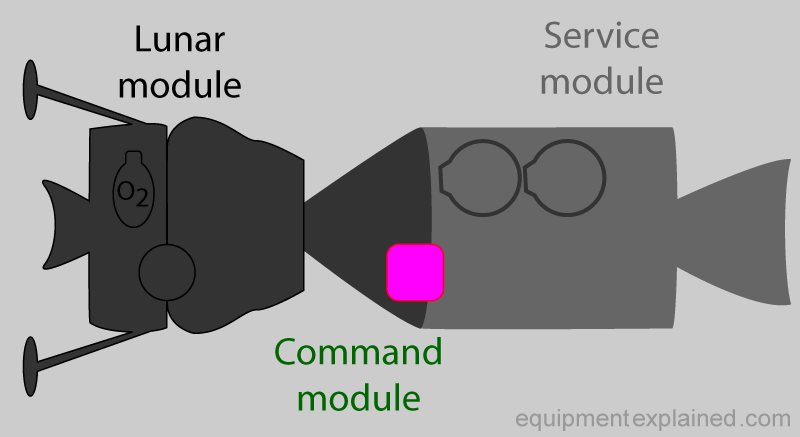
The image below shows one from a command module, which, as you can see, is square-shaped.

Let me show you, using actual images, how the astronauts would replace such an absorber container in the command module.
After a while the Lithium Hydroxide in a container would “run out” (i.e. the chemical reaction would get “used” up) and the astronauts would remove the now useless container. Image 1 below shows an empty slot from where a used container has been removed. Image 2 shows a new container that has been put into the slot. Image 3 shows the door, which then is closed as shown in image 4.
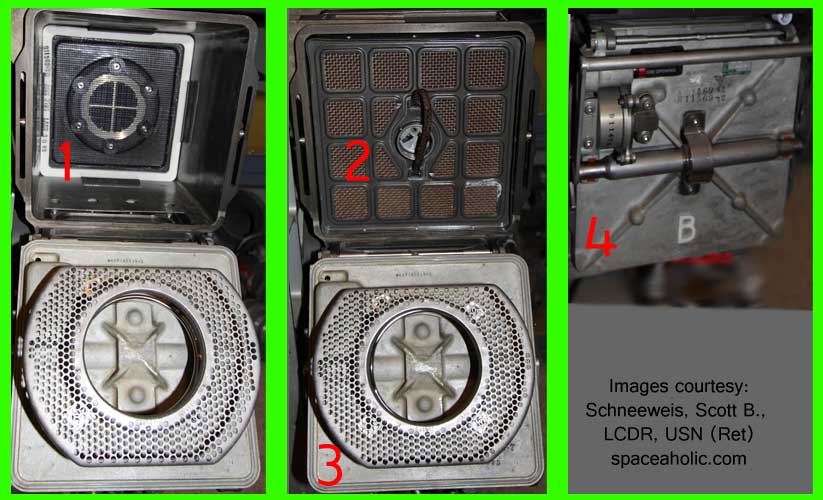
Now let us look at the absorber containers in the lunar module. Here the Lithium Hydroxide was kept in “circular” shaped containers.
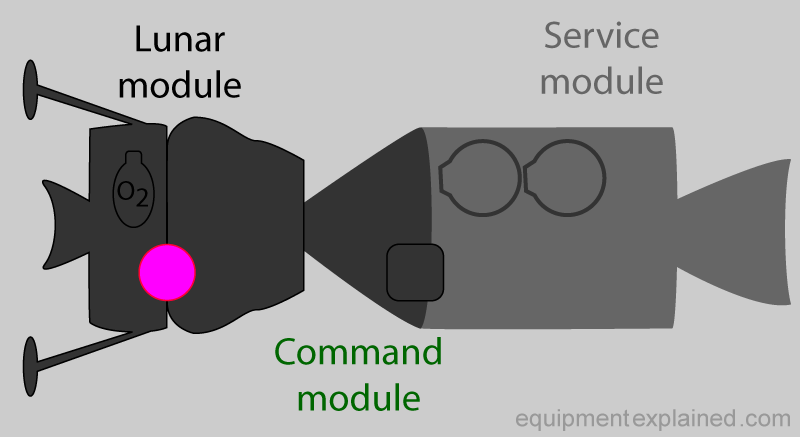
Shown below is the area in the lunar module dealing with carbon dioxide absorption. The circular Lithium Hydroxide containers would be put into the circular chambers behind the lids shown below (red arrow).
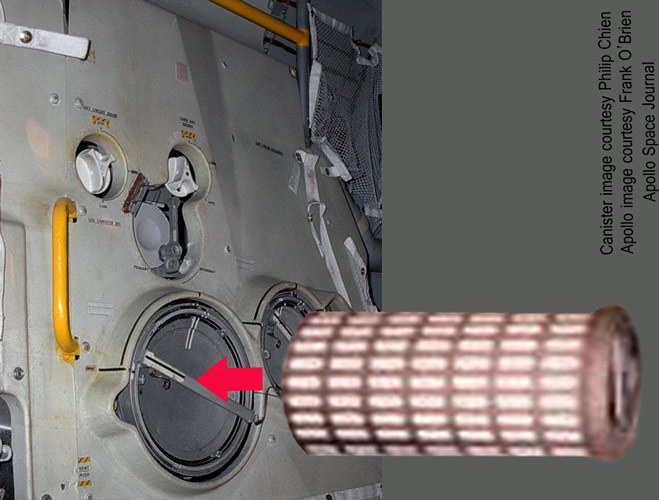
So in summary, the lunar module had its own circular-shaped absorber containers and the command module had its own square-shaped absorber containers.
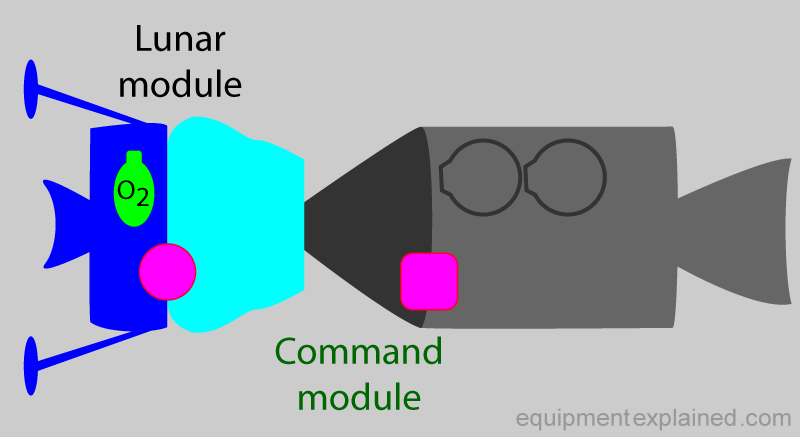
A while ago I said that Apollo 13 had a problem with carbon dioxide. The problem was that the lunar module did not have adequate absorber containers to cope with the three astronauts now seeking refuge in it. The lunar module had only enough absorber containers to cope with 2 astronauts for about 2 days. Now there were 3 astronauts who needed to survive in it for 4 days. If something was not done, there was a very real risk of the astronauts dying of carbon dioxide toxicity.
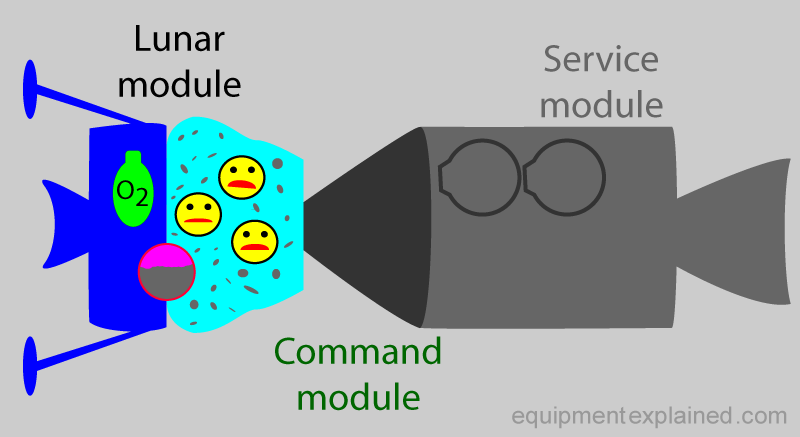
Shown below is a photograph of the interior of a lunar module. The tip of the blue arrow points to the meter that displays the concentration of carbon dioxide in the lunar module air.
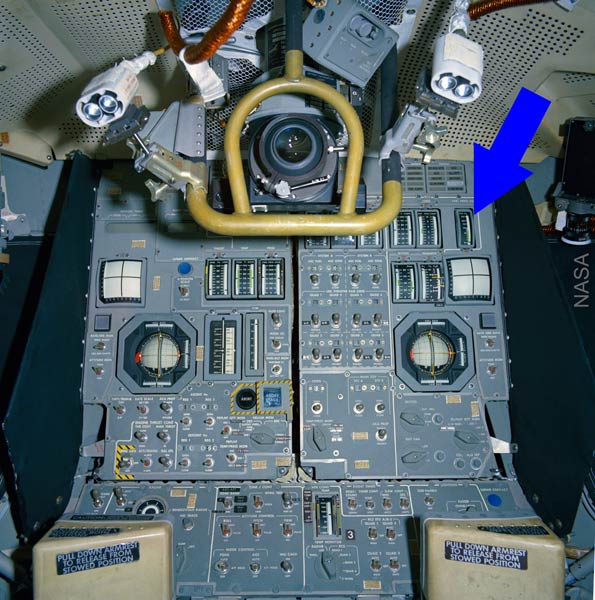
Normally this gauge should show a carbon dioxide level of nearly zero (mmHg). However, with the problem of the inadequate absorber containers in the lunar module, the meter was showing numbers as high as 15 mmHg.

Something had to be done urgently. If the carbon dioxide levels kept rising, it would have killed the astronauts. The tragedy was that there were plenty of carbon dioxide absorber containers in the command module to last the whole journey, but these could not be used in the lunar module because they were of the wrong shape.
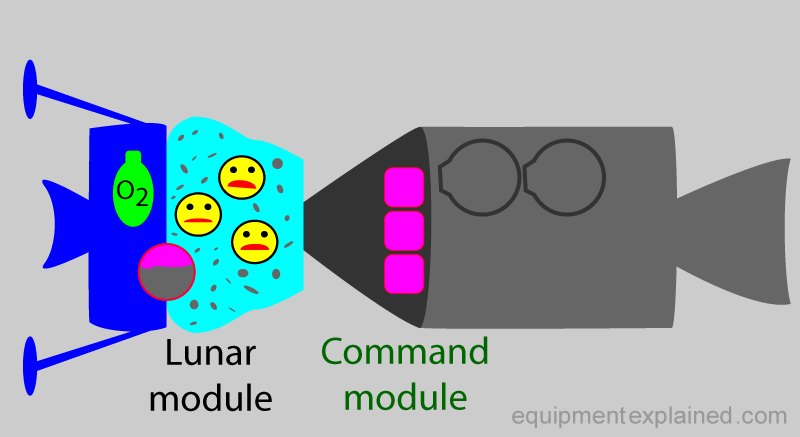
As shown below, the square containers from the command module would not fit in the cylindrical chambers found in the lunar module.

The engineers on the ground worked hard to find a solution. They wondered if they could modify the lunar module’s carbon dioxide absorption system.
When functioning normally, the system consisted of an air pump that sucked carbon dioxide laden air into the circular-shaped carbon dioxide absorber container. It then returned carbon dioxide free air back to the astronauts as shown below.
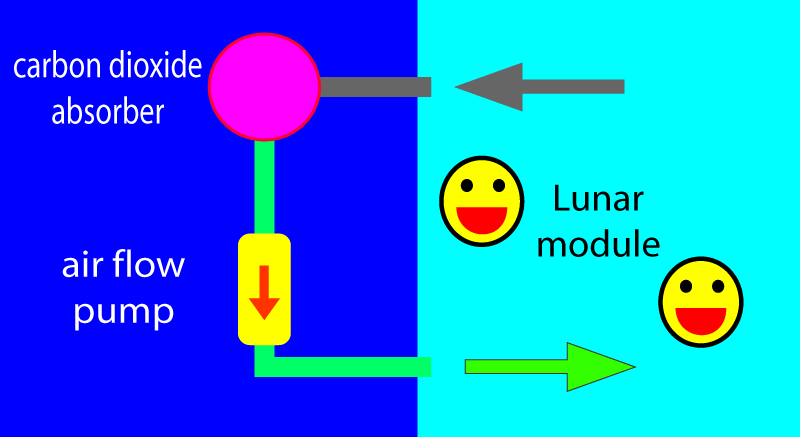
The problem was, that once the lunar module carbon dioxide absorber containers got used up, the pump would re-circulate carbon dioxide containing air. Eventually, if nothing was done to remedy the situation, the carbon dioxide levels would rise to a fatal level.
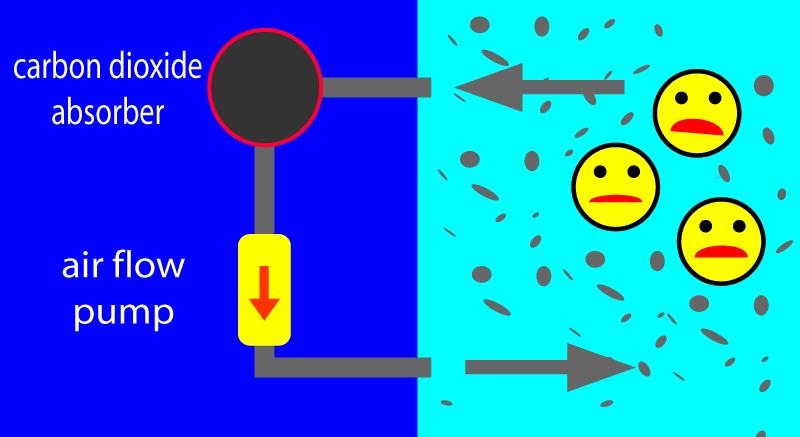
The engineers were trying to find a way to use the square-shaped command module containers in the lunar module.
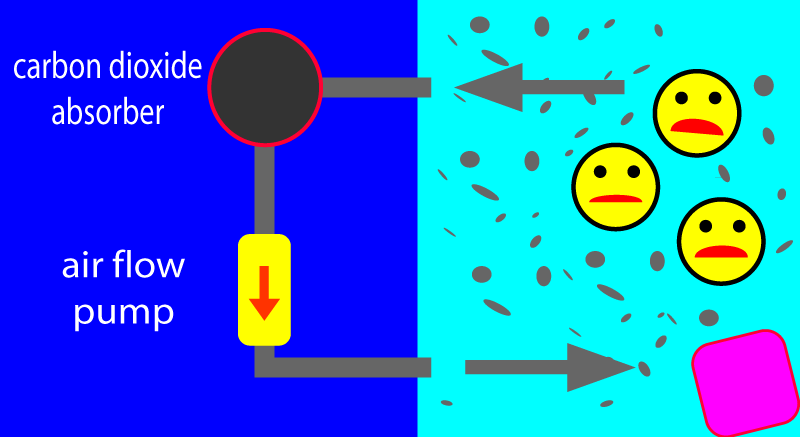
Finding a solution was not as easy as one might have imagined. Whatever solution would have had to use only material found in the spacecraft. There was no option to walk to a nearby shop to buy something!


I am the author of this website. Let me tell you about another website I created that you may like. I am interested in psychology, especially how one’s thoughts can affect one’s happiness. I have made a website that explains, in an easy-to-understand way, how one can find happiness by changing how one thinks. The website is called “Happy Thinking”, and you are welcome to benefit from it at the link below. It is entirely free.

So this is what they advised the astronauts in space to assemble. First, they asked the astronauts to take a square absorber container from the command module.
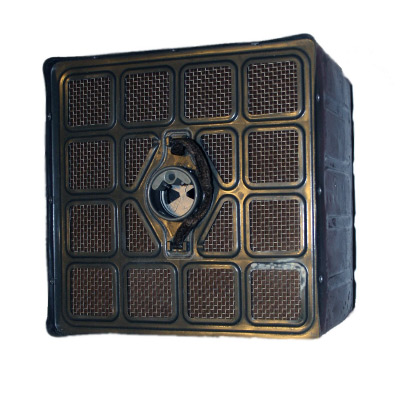
The spacecraft had spare hose pipes. They asked the astronauts to attach one end of a hose to the front of the square absorber container.
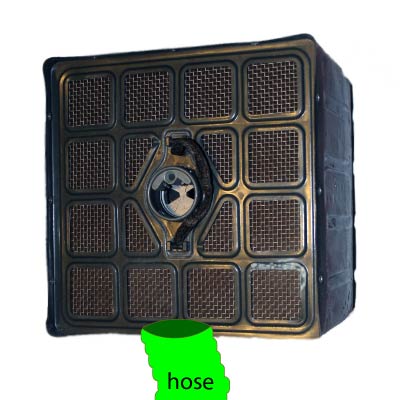
Next, a piece of cardboard was taken from one of the spare folders in the spacecraft. It was made into an “arch” and placed over the container. I will tell you later why this cardboard piece was essential.
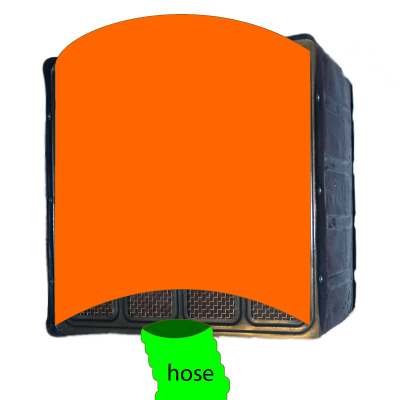
Finally, a plastic bag was draped over the cardboard and over half the container. Everything was taped to make a good seal.
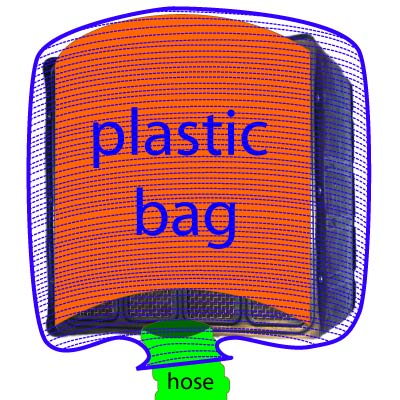
Below is a photograph of a replica of the absorber modification:

Below is a photograph of the ground control room. The engineers had assembled a sample of what they wanted the astronauts to construct in space. The ground control had no way of sending images to the spacecraft. So using only voice messages, they were able to accurately instruct the astronauts to assemble the contraption described above.
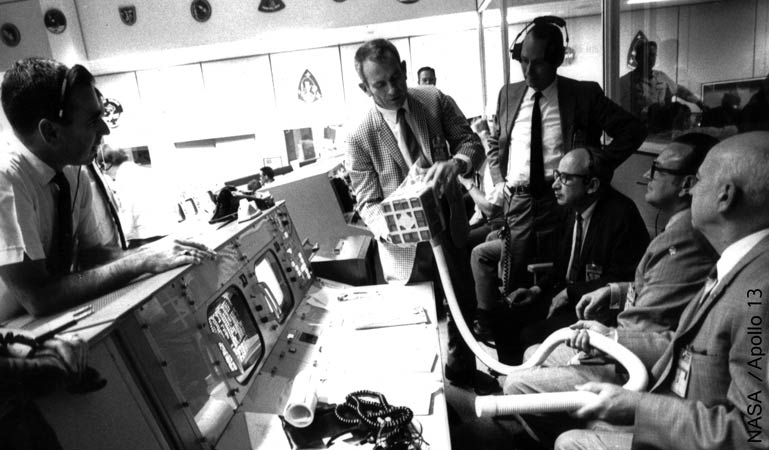
The astronauts then connected the hose of the modified command module absorber container to the “used up” absorber system of the lunar module as shown below. The airflow pump now sucked air with carbon dioxide through the modified absorber. After going through the modified absorber, the carbon dioxide free air was returned to the spacecraft interior. In this way, it was possible to use the square absorbers in the lunar module!
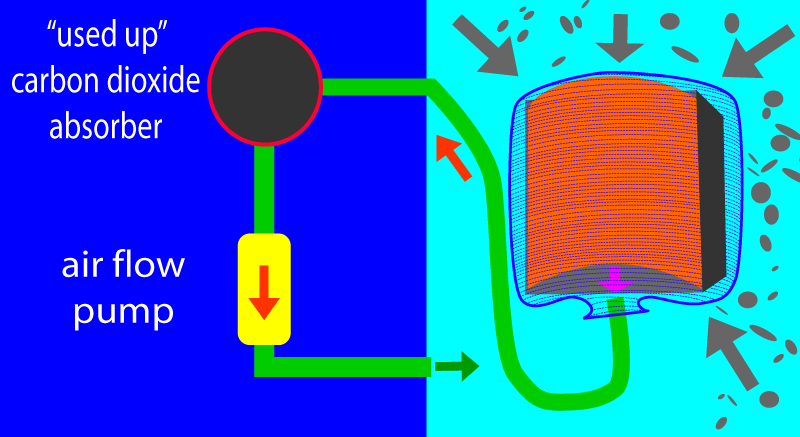
The purpose of the piece of cardboard (shown in brown, below) was to prevent the plastic bag (blue) from collapsing due to the suction force of the airflow pump. If the bag collapsed, it would have blocked the hose shown in green.
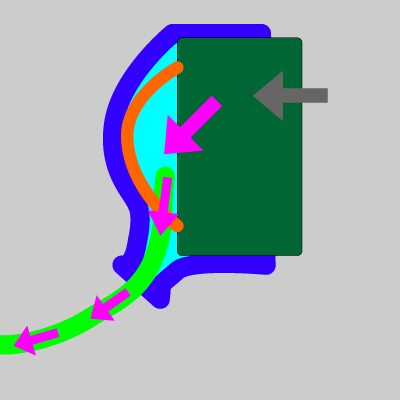
Here is a photograph taken showing the actual modified absorber in use. You can clearly see the square absorber taken from the command module and the hose attached to it. Unfortunately, the cardboard is hidden from view because it is behind the absorber. I am sure you will forgive the astronauts for not taking too many pictures as, at this point, they were not sure if they would even make it back to Earth!
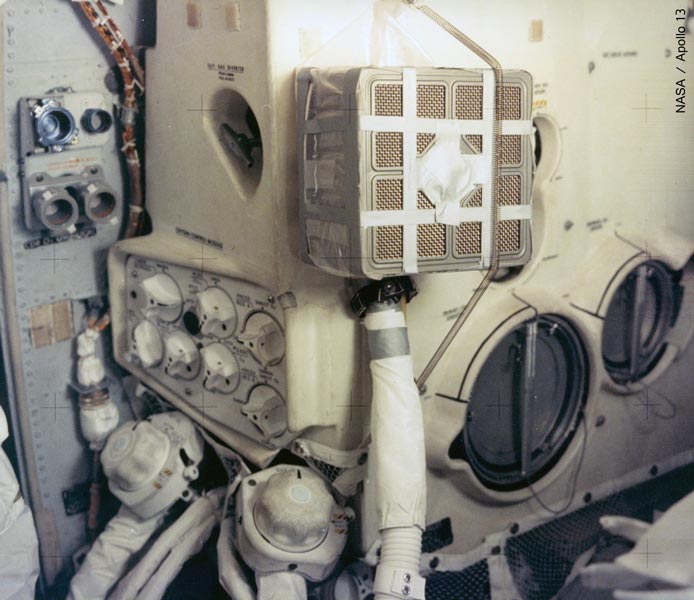
Now the big question was, “Did the system work ?”.
The answer was a resounding “yes”. Within a short time, the carbon dioxide reading had gone down from 15 mmHg to about 0.1 mmHg! It was a big success!
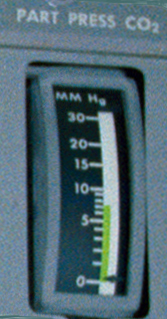
Thanks to the absorber issue being sorted, the astronauts could now deal with the other tricky problems that needed to be sorted if they were to return home. The photograph below shows the astronauts working on some other issues. In the background, you can see the modified carbon dioxide absorber doing its job.
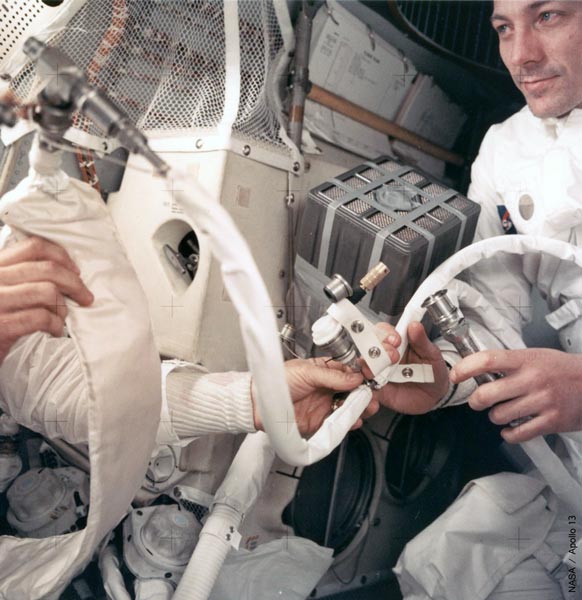
The astronauts were finally nearing Earth. Below is a picture of the Earth taken from the spacecraft.
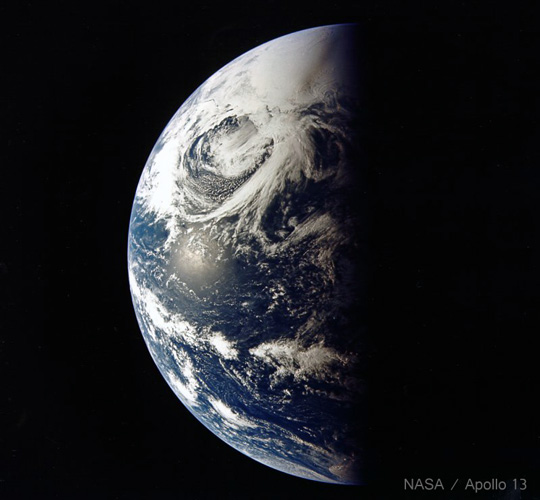
It had been a long wait for the astronauts. So far, they had been about 6 days in space.
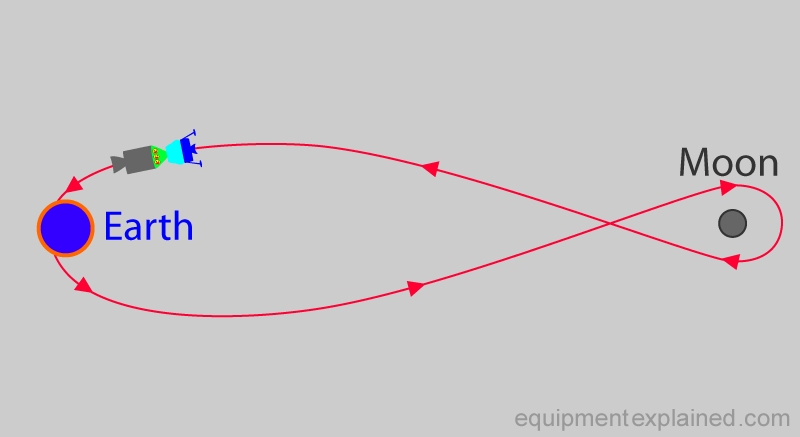
It was time to make final preparations to go home. The initial thing to do was to get rid of the parts of the spacecraft that were not needed anymore. The first part they got rid of was the service module.

Though the astronauts knew that there was an explosion in the service module, they had not “seen” the damage with their own eyes as they could not go outside and look! But now, as the service module drifted away, they were finally able to see the damage through their windows. As it moved away, they quickly took the photograph shown below. They were shocked to see the large area of damage (red marked area below). The service module fell towards Earth and due to the extreme speed of the fall and the resulting heat caused by air friction, it would have burnt up in the atmosphere.
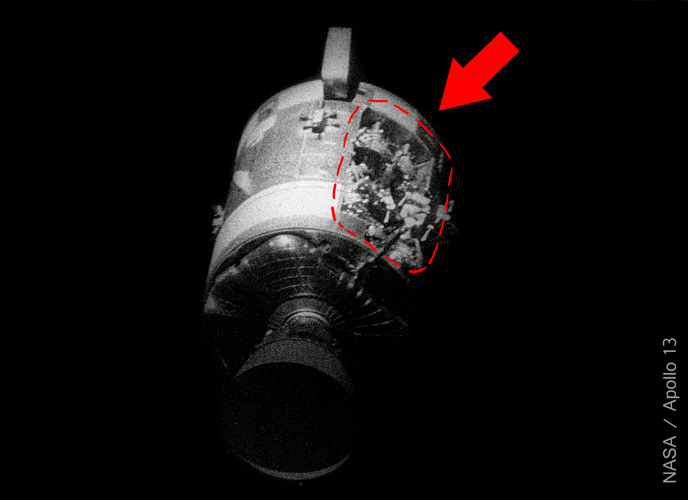
It was now time to wish the lunar module goodbye. It had been the “lifeboat” that had kept the astronauts alive. The astronauts looked at it as it drifted away to fall into Earth.
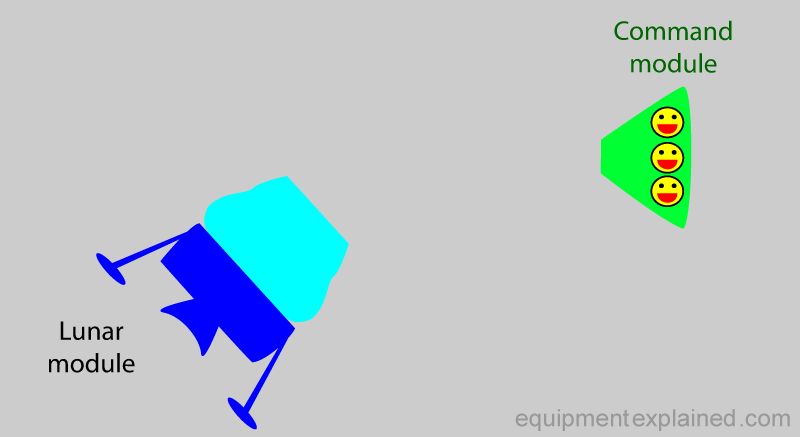
As it fell away, the astronauts took this black and white picture of the lunar module. It too was mostly destroyed by the heat caused by entering the Earth’s atmosphere at very high speed.

Now, finally, it was time for the command module and its three happy astronauts to return to Earth. I mentioned how the service module and the lunar module would have burnt up in the atmosphere due to the high speed of descent through the Earth’s atmosphere. Fortunately, the command module had a special method to survive the fall into the Earth without burning up. On its underside was a special heat shield. This was designed to slowly melt away, and as it did so, it “threw” the excess heat away, protecting the astronauts inside.

Here is an actual picture of a heat shield that has partly burnt away.
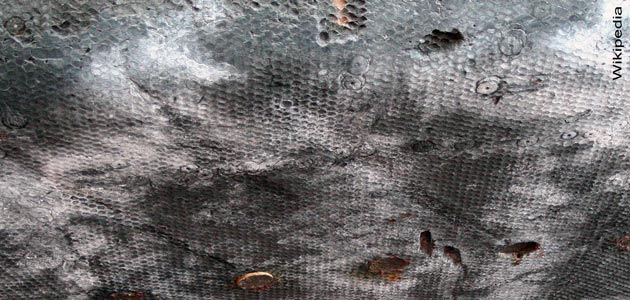
The command module with our astronauts attained speeds as high as nearly 40,000 kilometres per hour (roughly 25,000 miles per hour)! Fortunately, as the sea was nearing, a system of parachutes slowed the capsule down dramatically.

Finally, they touched Mother Earth (or would you say, “Mother Sea” ?).
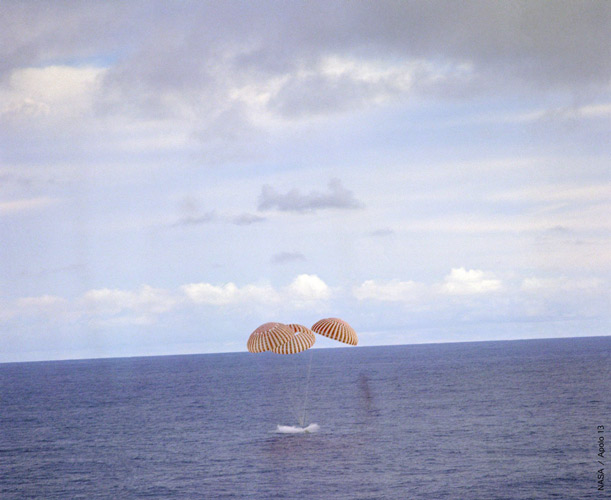
The astronauts were then picked up by special retrieval teams. After being in the cramped confines of the spacecraft, the wide ocean must have been a big relief.

And finally, the command module was “rescued”.

They were now safely onboard the retrieval ship. The photograph below shows them probably sharing their joy with their families. If not for the carbon dioxide absorbers being modified, they wouldn’t have been alive to make these phone calls.
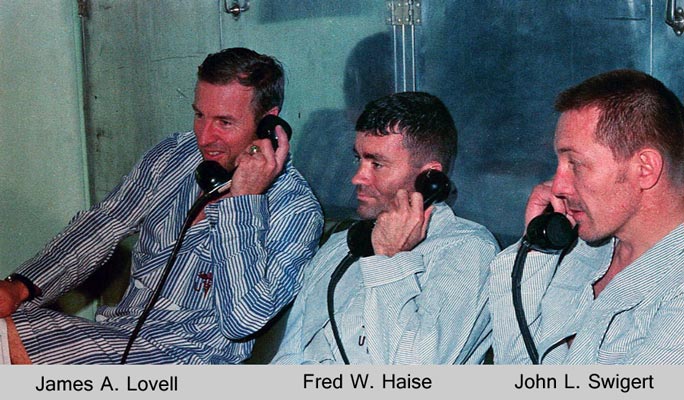
I hope you have enjoyed this story that I have shared with you. Thank you for reading it and please tell your friends about it. See you soon in another section of this website. Bye!

Hello! My name is Pras, and I am the author of this website. I have made the website completely free to access so that people from all over the world can benefit from it.
If you can afford it, I would be very grateful if you would consider making a single donation of one dollar (or the equivalent in your currency) to help cover the expenses needed to run this website (e.g. for special software and computers). For this website to survive, donations are desperately needed. Sadly, without donations, this website may have to be closed down.
Unfortunately, perhaps because many people think that someone else will donate, this website gets only very few donations. If you are able to, please consider making a single donation equivalent to one dollar. With support from people like you, I am sure this educational website will continue to survive and grow. Thank you very much for your support.

